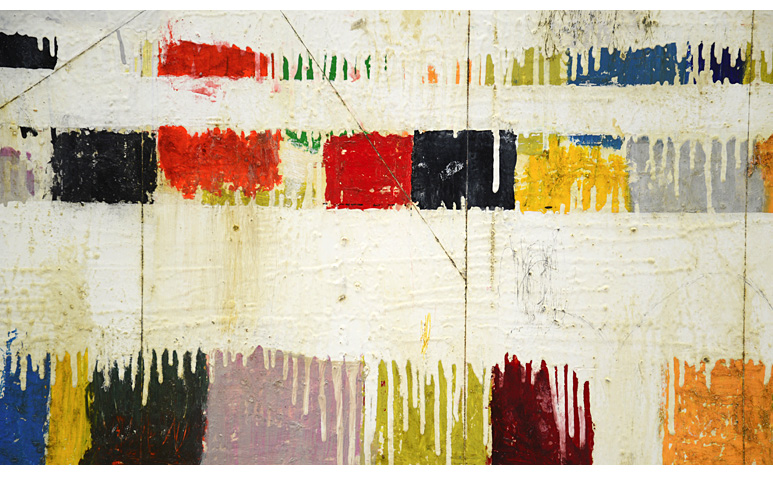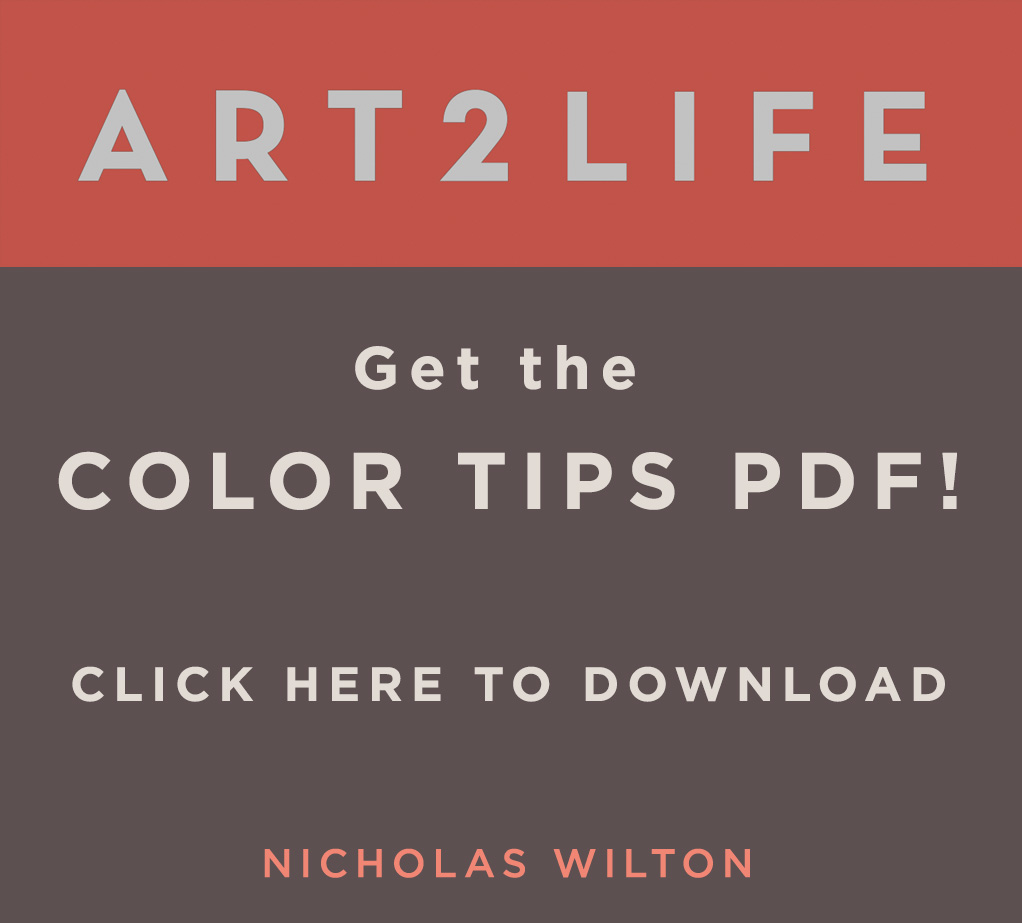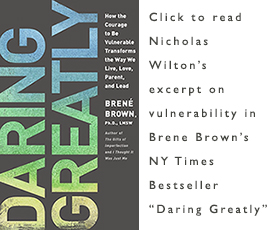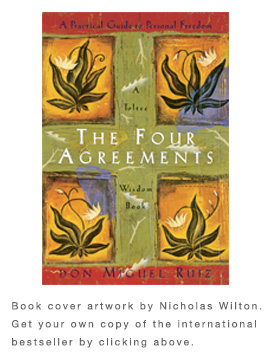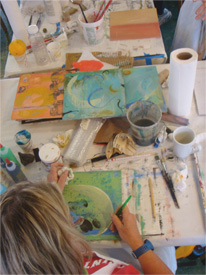How to Happily Make Art for Someone Else
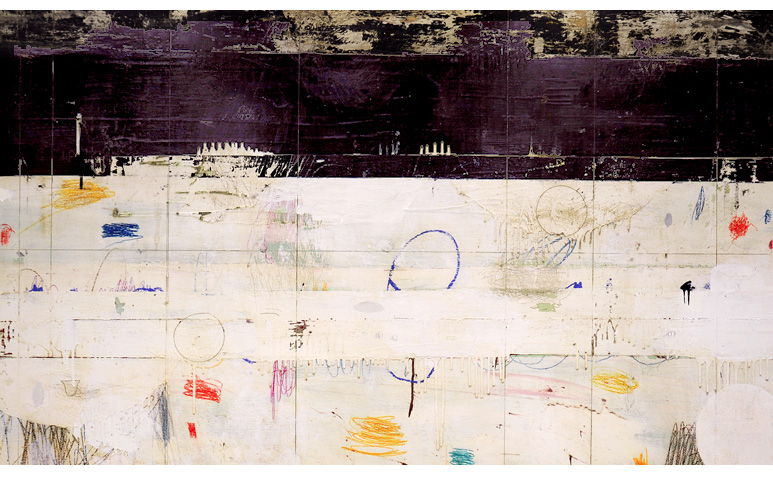 The wonderful thing about fine art is that you get to make what you want. Making Art at its best is unbridled personal expression, free of concerns for making it a certain way or pleasing anyone beside yourself. There are very few things one can do in life that carry such freedom.
The wonderful thing about fine art is that you get to make what you want. Making Art at its best is unbridled personal expression, free of concerns for making it a certain way or pleasing anyone beside yourself. There are very few things one can do in life that carry such freedom.
It is no surprise then, that when Art is made for someone other than yourself it becomes trickier. It could be a friend, an institution or a collector. Anyone peering over the shoulder of the artist, who has a vested interest in the outcome, can often make the creative process more challenging. It no longer becomes just about pleasing yourself, but becomes about pleasing others as well. If it seems hard sometimes to please yourself, then it becomes doubly so when others are on the sidelines waiting.
You might have guessed by now that I am mostly talking about commissions. Those projects that are often instigated by someone who has seen something you have made before, that they love. And of course it is no longer available, which makes it that much more desired. The only solution is for them to commission you to recreate it again – not as an exact copy, but something usually close.
The artist must now create in a different way. This new way of creating, this thinking is no longer solely the artist’s. It is easily affected by the wishes and concerns of the waiting patron. It can be very difficult to not think about the comments and concerns of the interested party who has possibly put thousands of dollars on your studio table. We all want to please. I know I do. Unfortunately this can stifle the creative process.
It seems so easy to point at something done previously, probably something done effortlessly and without particular thought, and think it can be remade again. This hasn’t been my experience. The second time around almost always becomes tiring or even worse, incredibly rigid and stiff.
Usually it is both, but since it assured a sale where there wasn’t one, I usually agree. It always seemed so possible, such a reasonable request. I am, after all, an artist. What is the big problem?
Over the years, however, I have become better at doing commissions. I actually enjoy them now. What really helped me was coming up with two rules, commitments to myself actually, that I now follow. If I do, then everything is much easier. Maybe they can help you too.
You have to be excited.
I never accept a commission unless I genuinely want to make this particular piece of art. I have to be somewhat engaged and in alignment with the premise. For example, if it is making something derived from very, old work I probably won’t accept the commission. I no longer make Art in the way I did 10 years ago. I don’t want to go backwards, so this is a definite no. It has to be current. In short, I have to be able to become excited about it. I know for certain if I am not excited, the art will fall flat.
Make it yours. Always.
The second commitment to myself is my personal guarantee. I tell myself that at any point and for any reason, if the client is not entirely happy, they are under no obligation to purchase. If they are not totally happy with the commission then I will keep it. This puts me squarely back in the driver’s seat of making the art according to just my sensibilities. It doesn’t matter at all if the client accepts it or not. I just have to like it so much, it must be so strong, that I would gladly send it to one of my galleries, or better yet, keep it myself. This painting, in other words, is made to please myself.
It becomes almost incidental that there might be a buyer waiting for it – or perhaps there is not. Strong work sells. If I love it, then someone else will too. And in the end the primary experience, the lion’s share of the value is not the price but the experience of creating something you actually really, really like. I get that regardless. It must be a win for me no matter the outcome.
Interestingly, if I truly love it, almost always the waiting buyer will too.
These two commitments seem obvious but it took me years to figure it out. Maybe you have a knack for doing commissions, a way that makes everyone happy. Especially you.
If you do I would love to hear about them.
In gratitude, Nicholas
3 Steps to Make Your Dreams Come True
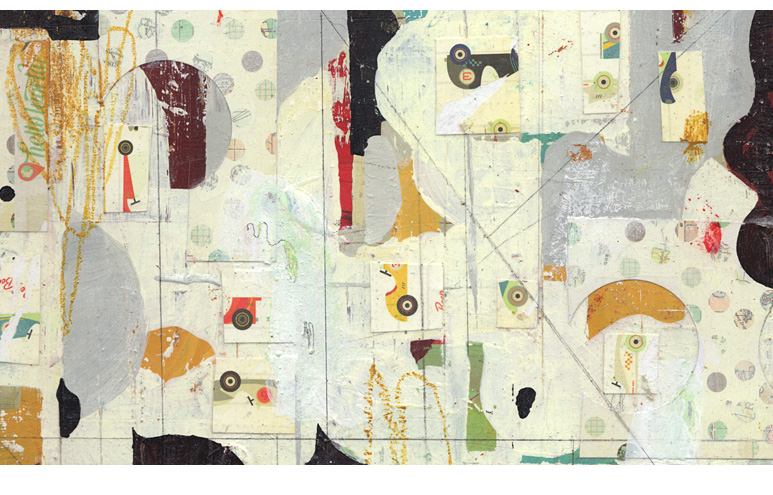 If you have a dream, something you are passionate about achieving in your life, sometimes it can be reassuring to look back a few years. How did you previously accomplish something that is now present in your life that was at one time just a dream?
If you have a dream, something you are passionate about achieving in your life, sometimes it can be reassuring to look back a few years. How did you previously accomplish something that is now present in your life that was at one time just a dream?
I do this all the time. In doing so, I have noticed a pattern of behavior.
There have always been a series of sequential steps taken. They have been present in every journey I have taken from a dream to reality.
These steps have become so familiar I finally just had to give them a name. I call it the Pattern of Desire.
Maybe this could be helpful for you too.
Step One – Begin in any way possible.
This is the hardest step as it involves some degree of courage. Whatever that thing is you desire, whether it is writing a blog, dramatically improving your Art, learning to sing (that one terrifies me) or even quitting your day job to do whatever that is your more passionate about, you first must just do one thing.
You must begin. The first steps can be small but they are essential. Do that one thing that moves you a tiny bit closer towards the dream.
The “Living on the Amalfi Coast in Italy, making Art in the morning and swimming in the warm sea every afternoon” dream (Oh you have that one too?) might possibly start by taking a beginning Italian class at the local community college. Getting your Art in a prestigious gallery might begin by taking a trip to visit and possibly just saying hello.
It is hard because it is an actionable step. You must DO something. You must be proactive. It is scary because any worthwhile dream carries within it the fact that you have never actually been there before. It is all brand new. And that is scary.
So make it a small step but simply begin it in any way possible. The pattern will not work if this step is not first taken. The world will never know what truly extraordinary thing you were thinking of bringing to life. You simply must first begin.
Step 2 – Talk about it
The repercussions of taking an actionable step towards whatever that desired thing is in your life is significant. Almost immediately the payback comes in some form of exhilaration. Pushing send on that first ever blog post you just wrote, or starting to paint on the biggest painting you have ever tried, gives you the secret sauce you need to maintain momentum. It also is newsworthy.
I always tell my students that the challenges they are overcoming, getting their work from A to B might not be pretty, it might be hard but it is almost always super interesting for other people to hear about. We all appreciate the Mona Lisa but wouldn’t it be fascinating to hear how Leonardo felt insecure the day he painted it? That he was going to work on that other painting of his neighbor’s dog but since he couldn’t find it in his messy studio he just decided to work on the one of that rather plain looking girl he had started but didn’t feel particularly good about?
So let the thrill of beginning enter your life and share it with those around you. Talk about what it feels like to have your first ever reader comment on something you have written, say you feel happy in Italian or share on Instagram a photo of that started painting that is so big it practically couldn’t fit into your studio.
It is not boasting. It is generosity because your willingness, your bravery to take a step towards whatever it is you desire in your life inspires everyone around you. Talking about it, sharing it also adds to your momentum. Like a child first learning to ride a 2-wheel bicycle, you are wobbly but OMG! I think I am actually doing this and now the feeling is contagious. This is big news. Make sure all those you care about know about it. Tell them your dream is starting to come true. Because, in fact, it is.
Step 3 – Teach Someone
I used to think I had to be the world’s biggest expert to teach. I now see how that thinking was flawed. It really held me back for years from helping people because of course I never could really become the world s biggest expert in anything. It is also not necessary. In fact, all that is needed is that you are simply just a few bends down the road ahead of the person you are teaching. So wherever you are on the road to accomplishing whatever you desire in your life, I assure you there are quite a few people behind you wishing they were where you are right now.
So help them.
The act of teaching, offering guidance will not only be super helpful for those around you but equally important to you. There is enormous personal conviction gained by teaching. The universal principles of first giving and then in turn receiving – not to mention the confidence and personal authority that all comes with helping others – is often all the additional tailwind that is needed to hold your course steady to the realization of your true desires.
It does of course take time. It might take years. However, knowing that you are on a reliable course, that there is a worn path ahead of you, makes the journey far more doable. If the journey is familiar, it will be palatable. The path can be enjoyable and even exhilarating. If it is, there is a strong likelihood you will remain upon it. And of course if you do, then that desire that once was only a dream, might just possibly come true.
What are some of your dreams?
In gratitude, Nicholas
How to Know When You Need to Change Your Art
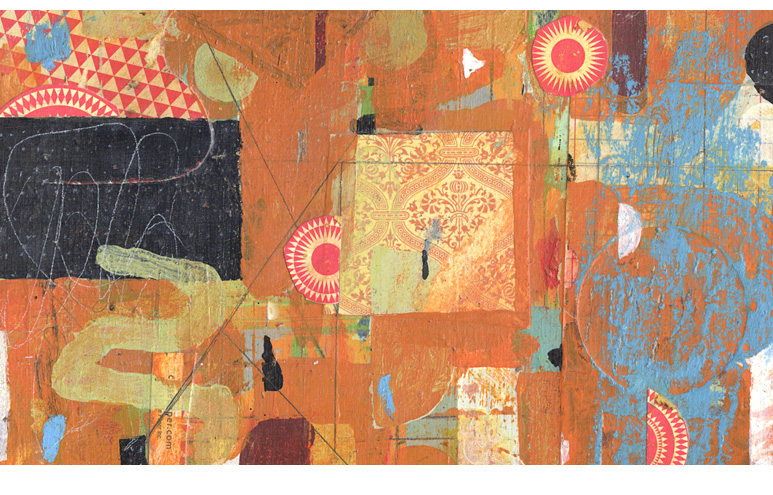 It seems once you arrive at a good place with your work, in no short time, this place begins to lose its appeal. Over time it even can become boring. The only way out of this is to change our work. Knowing how or when to change is not always apparent. This can be tiring, scary and bewildering. It seems we never can just arrive and stay happily ever after.
It seems once you arrive at a good place with your work, in no short time, this place begins to lose its appeal. Over time it even can become boring. The only way out of this is to change our work. Knowing how or when to change is not always apparent. This can be tiring, scary and bewildering. It seems we never can just arrive and stay happily ever after.
This might be why making art is so challenging for people to start – certainly it plays into why so many artists find making art unsustainable. Do you ever wonder why you signed up for a lifetime of pushing this big rock always uphill? I do.
There is, however, a way out. And this way out is called change. Yes, it is hard, but even with its inherent uncertainty it is far more palatable than the onset of boredom. This state is worrisome because like an incoming tide at night, it happens so slowly that you sometimes don’t even realize it is happening. Boredom in your practice can be incredibly time consuming and emotionally draining. Going through the effort of making art with all its costs and time only to later realize that you never really liked doing it or where you ended up can be super depressing. Sometimes it can feel so bad that you can feel like giving up art entirely.
So it is important to catch boredom early and instigate change. But how do you know it is time?
I have a difficult time recognizing when it is time to change and shift my art into a new direction. Over the years however I can look back and see a pattern in the clues that slowly begin to arrive. Most of the time I have ignored them, thinking I can avoid the inevitable. I try now to just be proactive as soon as the first signs of needing to change begin to arrive. It saves me a lot of time and heartache.
Here are the 3 clues that consistently show up. When these 3 arrive they help me to know that fortunately, unfortunately it is time to change. Maybe they can help you too.
Change in your Art might be needed when…
1 You look more and more outside your Art for reassurance.
When my work loses it’s potency and I am too afraid to change it, I tend to focus on what the gallery, or collectors or even friends have said positively about my work. I must be doing well because I sold this or someone said that positive thing about my painting, is a thought that might cross my mind. I even re-read favorable emails to bolster my sense that I am still happily on course. The problem is, of course, that it actually is never enough. In Art it should never be about what everyone says, or how or who bought your art or how many likes you received on facebook. The resting place is only found by actually making your Art and making it more and more like you. Creating Art that you love, even if that feeling only lasts for a week, thankfully, trumps all externalities.
2 Your day seems long.
Losing track of time might be the gold standard for what we are all after in our Art making. I often say this during the later stages of a workshop once everyone in the room is comfortable and have totally dropped into making Art. There is a palatable hum in the room, a collective ease and just this meditative focus that occurs when everybody is finally just making their art. The anxiety and the comparisons with the work of others fades away, and all that remains is color, wonder and curiosity. This state, this way of being like a kindergartener making art, is as good as it gets. It is also when time amazingly stops. If it has been awhile since this has happened to you, then more often than not your art is signaling to you that it needs to change.
3 You compare yourself to others
It is important to look at art that amazes you. It is dizzying to spin around the internet and see the myriad forms of expression that exist. I no longer can do this anytime near my bedtime because I can’t sleep afterwards. It is that inspiring, that wonderful.
But the practice of looking at the art of others is very different from the practice of making your own. It can feel like we are progressing by spending inordinate amounts of time looking at others’ work but ultimately our work only really progresses when we are quietly standing in front of it. When our art loses its allure because it has remained the same too long in our eyes, then standing in front of it no longer fills us, stimulates us in the way it once did. So we go to the next best thing: Art, not made by us but by others. It seems logical but going, once again, outside yourself for the answers never really provides them. If you find yourself spending more and more time looking at other artists’ work it might just mean that boredom within in your own practice is setting in.
The challenge, the hard part of making strong art, is also its supreme gift. This idea that we can’t really game the practice of making art is a good one. We have to be truly into it, totally engaged to make something worthwhile, and though this can be challenging, you wouldn’t want it any other way.
To be reminded every day, every time we step into the practice of making art that we need to pay attention, right now, right here, is a blessing. It is a good thing to be vigilant to the fact that our time here is truly limited. What we make matters and will ultimately be measured by the changes that occurred, the risks taken and whether or not we truly were present at the time.
Have your experienced any of these 3 signs of boredom in your work? How have you dealt with them? I would love to read your thoughts on this.
In gratitude, Nicholas
Improving Your Art the Easy Way
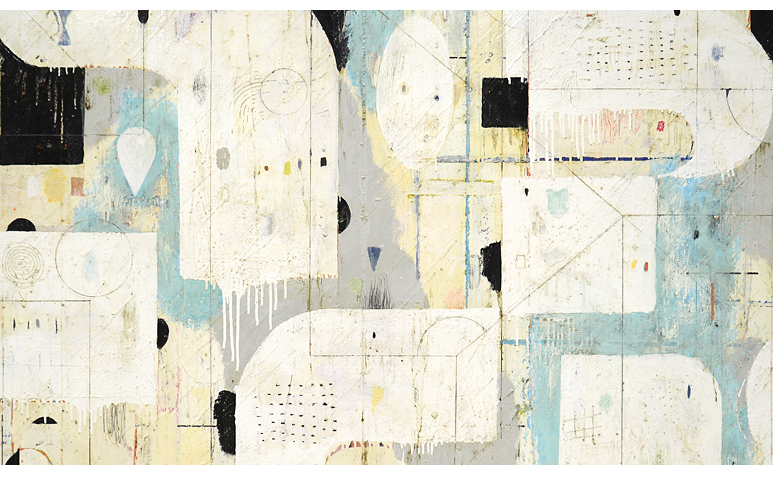 I have noticed an interesting thing about how I learn and improve my art. I used to think the more time I spent painting – meaning the actual, physical time I spent working hard – was in direct proportion to how much my work improved.
I have noticed an interesting thing about how I learn and improve my art. I used to think the more time I spent painting – meaning the actual, physical time I spent working hard – was in direct proportion to how much my work improved.
Over the years, working hard is just something I felt was my only option if I wanted to make my art really great. The harder I worked, I thought, the faster and better my art would become…Now, years later, I think that maybe I had it all wrong.
I began to understand when I was listening to the poet and philosopher David Whyte speaking in San Francisco a couple of years ago. He said something I didn’t completely understand at the time, but which I wrote it later so that I could.
He said, “…Visitation, absence, visitation, absence, visitation, absence, (he this repeated over and over again) is how we learn.” In other words, the time between the periods of effort, the pauses are fundamentally as important as the periods of work. He believes that this “on, off and on again “ process produces more consistent, more substantial results. It is not how long we work but rather how often. I have now come to realize that this is also true for me.
This week I am teaching a 5-day workshop on Vancouver Island in British Columbia. This is an amazing opportunity for people to spend an unbroken period of time just focusing on their art. The improvement is extraordinary. However, I also have taught a 6 week, 3 hours per week evening course in my studio. What I have seen, amazingly, was that these students – even though they were only working 3 hours a week – also have had similar remarkable improvement even though they were working half as much time as those in the workshop.
I now understand that even though they were not physically painting as much, they were, nonetheless, still thinking about principles they had learned. Examples of color, value, and composition all begin to creep into their everyday life and as a result their visual sensitivity increases. Miraculously they just improved every time they came to class.
So maybe we don’t need to work harder forever and ever, but instead just sometimes put the brushes in the can of turpentine and go away for the afternoon. In the name of improving my work, I now should go bird watching more often. Or collect driftwood or even play some bocce ball. Just mix it up.
Visitation, absence, visitation, absence. This is truly how we learn. I think this way of working is going to work out much better not just for my art but for my life as well.
What do you do to stay inspired with your work?
In gratitude, Nicholas
The Thinking That Can Save Your Art
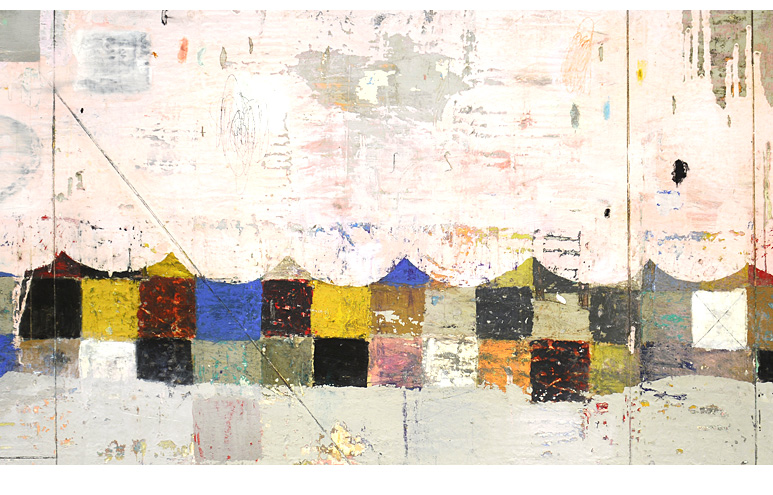 One of the trickiest parts of being an artist is maintaining momentum. I struggle with this and I also am amazed at how many artists that I work with do too.
One of the trickiest parts of being an artist is maintaining momentum. I struggle with this and I also am amazed at how many artists that I work with do too.
The making of Art can be super hard and then it can feel easy and effortless. It is a roller coaster ride that, for the most part, is tolerable. After all, life is like that too. We have good days and bad days.
However, when we add the additional difficulty of just showing up, of trying to squeeze our art practice into our busy life, it all can feel somewhat exhausting. In fact, for many artists, it can derail their ability to make art at all. It just is too overwhelming.
However, it doesn’t have to be. The key to this is understanding that there are 2 challenges here: the first being the actual garden-variety struggle involved with art making, while the second has to do with creating a sustainable art practice.
Art making always involves a degree of struggle. Getting information about materials, getting clear on what your own art is about takes time. It is an ongoing process. However, fixing the second one, making it easier to actually show up to make the work, is far easier to remedy. It has a lot to do with your thinking. And that can change very quickly.
After years of making art I came to an important realization about my art practice. It has buoyed my art making and has saved me countless hours of time.
It really is quite simple. And it is this:
Changes come more easily when you are making your Art than when you are away and merely thinking about it.
I used to do a lot of worrying and fretting in the middle of the night about whether my work was good enough or how I might fix certain problems. I would spend considerable time looking at other artists’ work to see if maybe the answers might lie there. It wasn’t that worrying and spending time searching the Internet for answers wasn’t helpful, as sometimes it did shed some light onto my challenges. However, it just became tiring to be always thinking about the difficulty in my art 24/7.
I was involved in the struggle of making art even when I wasn’t making art, which was pretty much most of my day. So I stopped. I realized that if I just postponed worrying about the art till I actually was in front of it that I could save myself hours of needless time focusing on trying to solve imagined problems.
And then I found out something wonderful and surprising.
I came to see that solving the problems and improving my art was far easier to do when I was actually in front of it, than when I was out to dinner 5 hours later with friends or even trying to sleep. It seems obvious now but it took me years to figure this out.
Additionally, much to my surprise, rarely were the imagined problems, the ones I was constantly thinking about when I was not making art, as difficult or as complicated as they turned out to be once I was. Things just were not that bad once in my studio listening to Earl Klugh on my Bose headphones and proactively making real changes to my art.
My father used to say to me that our problems, our challenges in life will never look bigger, feel more daunting than they do at 2 am in the silent darkness of a sleepless night. I think there is a lot of truth to this. Context matters.
There is no burning imperative to figure everything out remotely, when you cannot even see your art. You don’t have to do it the hard way. Avoiding this pattern will free up a huge amount of time and energy for when you are actually making art.
Instead of overly thinking everything, spend the time you are not making art doing those things that inspire and make you feel alive. It is, after all, the richness, the quality of the time you spend not making art, that so powerfully and poetically effects the time when you do.
In gratitude, Nicholas
Where to Find the Answer
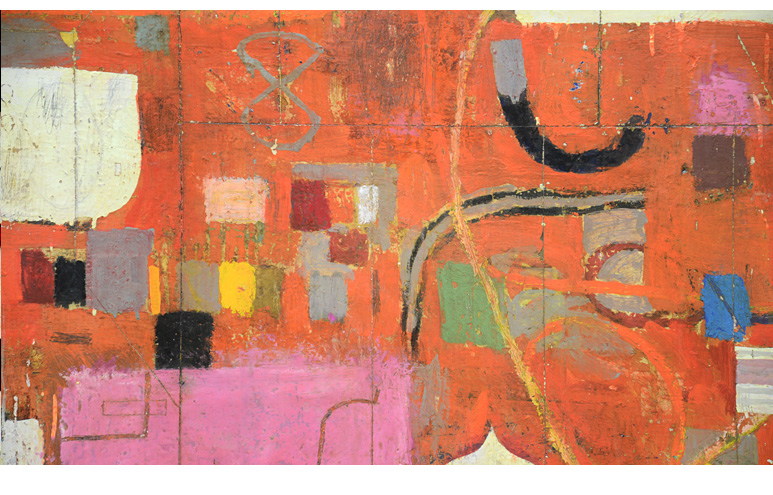 Sometimes I get so caught up in trying to finish paintings, or the business aspect of my art, that I can lose track of what I actually am doing in my art. What is this art all about? Where is all this headed?
Sometimes I get so caught up in trying to finish paintings, or the business aspect of my art, that I can lose track of what I actually am doing in my art. What is this art all about? Where is all this headed?
I know that I am dead set on improving, and I am always looking for signs of this in my art, but forgetting to ask this larger, more salient question about overall direction can often postpone one’s creative progress.
Just because the work looks better might not necessarily mean we are headed in a direction that is truly ours. Just like travelling down a road in order to arrive at a destination, there are circuitous routes and there are direct routes. From time to time I like to take both of these.
However, what I don’t particularly enjoy is repeatedly going into cul-de-sacs. Those give you the feeling of moving, but since you actually are just going in circles you always arrive at the same place over and over again. Ultimately this leads to boredom and although your work is repeating quite nicely, it is, in the end, remaining the same. The whole concept of going somewhere, the evolution, at least for now, has quietly come to a standstill.
And sometimes this is fine of course. It isn’t always about getting somewhere. It is ok to have a resting place. But eventually the innate desire for one’s work to become more aligned with oneself begins to grow.
So how do you find your way back onto a road that is actually going somewhere you are pretty sure you want to go?
It is a challenging question. It is also one, I have come to realize, that needs to be asked frequently. The answer, at least in part, can be found, not by trying to imagine unmade work in the future but by simply turning around from time to time and looking at the arc of your art behind you.
This is just such a simple idea but it is one that I so often forget. The trail of work, the evidence of my past efforts, some good, some not so good, that is building up behind me holds significant parts of the answer to this very relevant question.
Make it a habit to review what you have been making. Look for aspects of the work that still resonate with you. In other words, what is a Yes! And more importantly, what is a No? It might be color, it might be some kind of spontaneity or mark making but whatever it is, if it still is relevant, if it still sparking for you then re-affirm this in the future work. Keep it.
Conversely, if there are aspects that no longer feel like you, be proactive and let them go. This actually is the harder action to take. It is the same kind of nagging difficulty with letting go of all those clothes that, although are perfectly fine, are no longer like you. It is hard but important to shed them.
If you can move forward with your thinking more focused upon what you actually do love, what aspects of your art making that have in the past brought you more alive and unceremoniously leave behind those that no longer do, then your art will shift. It will improve.
It might feel a bit foreign initially to be setting off in a new direction, especially in a car that most of your baggage has been removed from. However it is this partial emptiness, the spaciousness that you have created that enables the new, more relevant aspects of your future art to be ushered in.
It is exciting and entirely possible, now that you are moving again, that just up ahead or around that next bend, you just might find even more of the answer you have been looking for…
In gratitude, Nicholas
The One Thing You Need To Make Amazing Art
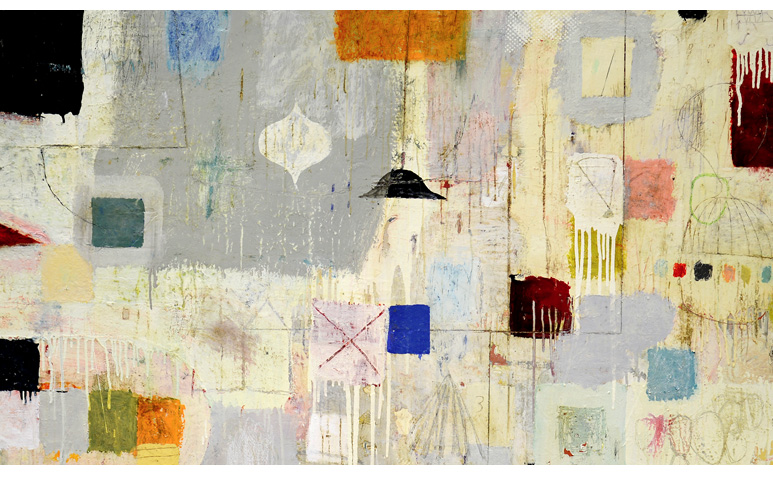 When I was just starting out making art, I was utterly focused on the kinds of art materials used by artists that I admired. Over my lifetime, I literally have blown bazillions of dollars in art stores. I think what I loved about new art materials was that each new material, each new kind of pen, paintbrush or color held the potential to radically improve my art. “Maybe this groovy pastel, or maybe this certain kind of vine charcoal will be the thing that creates a new look, a new desire for my Art.”
When I was just starting out making art, I was utterly focused on the kinds of art materials used by artists that I admired. Over my lifetime, I literally have blown bazillions of dollars in art stores. I think what I loved about new art materials was that each new material, each new kind of pen, paintbrush or color held the potential to radically improve my art. “Maybe this groovy pastel, or maybe this certain kind of vine charcoal will be the thing that creates a new look, a new desire for my Art.”
In many ways, this obsessive curiosity and false hope I placed on art materials was positive. I literally know how to competently use almost all the art materials out there…watercolor, acrylic, and graphite, oil, enamel, crayon, oil pastel, nu pastel and one of my favorites, gauche. I love them all.
But, positive benefits aside, I ended up empty handed in my search for my golden grail of technique and style. I finally figured it out it is not about the materials. I know that now more than ever. I wish someone had told me.
It is about something else. It is about Risk.
This week as I have been making art, especially repainting paintings that I actually like but do not love, I have been thinking about the benefits of Risk taking in the process of Art making and why it is so crucial.
I have gotten it down to three essential positives.
Risk is the Exit Door from Boredom
Getting bored with your Art is one of the most dangerous conditions, in my opinion, that can settle upon you in your practice. Once you are bored, once you start not caring, then the result is mediocre work. We all need to find meaning and value in our work and if we lose track of it, then we become overly reliant on the reaction, the worth that the outside world puts on it. This, in turn, begins the nauseating cycle where we put too much emphasis on what others think. There is just no way to gracefully sidestep that loop of caring too much about what others think. It is disempowering and creates a headspace that is incredibly limiting for generating powerful, authentic artwork. The only way to kick this situation to the curb and take your Art back is by raising the effort and pushing oneself into unchartered waters. Trying something new, going back to what feels right but is not yet visible is scary sometimes. If you are bored and there is a door in the room that says Risk, open it.
Risk=Growth=Change
I realize more and more that I need to be increasingly connected to Risk in order to generate my best work. I used to think every year or so an artist gets burned out with doing the same likeable art, and eventually just has to change it up, even though it is very uncomfortable. Once this chapter has occurred, however, you have another year or two to firmly dig your way into a new predictable kind of art.
I don’t believe this is the way to go anymore. I like to think of Risk being interchangeable with Growth, which consistently creates change in your work. And change is what keeps your work being like you. You are changing all the time and are not static. Neither is your Art. People who are serious about supporting you and your Art will also understand this fact.
When I have a new show of my work, the best response I can receive, the highest complement I can hear is “This is different!” Change is what engages not just you but also those who follow you.
The Biggest Risk might be the Smallest One.
We can fool ourselves into thinking we are doing something risky when in actual fact we are “risk posing.” I do this all the time. Especially when I am tired or would rather not be in the studio. I do it when I am not entirely in it. The problem is that these baby risks are not the same as real artistic risk taking. They don’t give you the requisite energy blast. They don’t automatically generate the kind of growth and change needed to make something that is so good that it takes even your breath away. These fake risks are in fact dangerous as they can indefinitely postpone the creation of your best work. I have done this for months at a time. The kind of mediocre work that is generated as a result can totally take the wind out of your sails.
Whether you are using pastels, crayons or drawing with a stick on a ceramic pot, whatever it is, keep this idea of Risk in your back pocket and pull it out often. It will save you oodles of time and help you more quickly make your strongest, most authentic, powerful art.
How do you invite risk into your work?
In gratitude, Nicholas
How to Sell Your Work Easier
Pricing and selling your Art can be challenging. It’s sometimes hard to know how much to charge or what to say, particularly in the spur of the moment when someone, a friend or close acquaintance, comes into your studio and looks at a piece of your art and asks, “is this one for sale?”
There are of course no clear-cut rules or guidelines about how much you should charge for your work. It feels pretty damn good to make something, usually something that at the time it was made, you felt so unsure about, and have someone desire it. That feeling is so gratifying that on occasion I have felt like just giving it to the person for free. I have actually done this. But of course that doesn’t really serve you and all the practicalities involved with running an art/life practice.
Creating more and more value, not just in your Art but also in your Life, has to do mostly with your thinking. Here then are a few ideas that have helped me increase the value of my art.
Create a Price List and Hang it up.
Right now you know what you have sold your work for in the past. Often the sizes are varied sizes and the prices have fluctuated. No matter. Determine a list of ALL sizes from small to big, with prices based upon what has sold previously. Make sure the range of prices is based upon square inches, and that the price of the work increases as the size does. It must be accurate. Create this, PRICES ORIGINAL ART 2016, on your computer in word or excel, and then print it out and hang it on your studio wall.
This achieves several things. First you see it. It keeps it centermost in your mind. Those prices should never, ever go lower, providing you are showing up consistently and doing your work. Every year you want to raise them a small amount or at worst let them remain. The value others will pay for your work is not magically set. The price, the value of your work is set and created by one person: you.
Don’t tell them. Show them.
When someone, usually a friend – which makes it even harder – asks for a price, it is sometimes difficult to know what to say. Being the creator, the artist, means that you will – if you are actually really trying to make meaningful, pushed work – undoubtedly be sometimes slightly insecure about the value of what you are making. So this very natural, normal orientation of a serious artist possibly makes you not the best person to be selling your work. But regardless, the job sometimes falls in your lap.
So what to say? What I have found easiest is to basically say, “Well, the prices are all based on the size of the work. I am not entirely sure on this size but I can send you the price list” or if they are standing in your studio, then point at it on the wall and say “let’s walk over to it and read it!” That is it. You are done. The focus has left you, (thank you) and has become focused on a document that confidently states your prices. Like the Ten Commandments or even the NY times bestseller list, there is something very concrete about information that is seen instead of heard. It exists, it is real and it is solid. This is exactly how the pricing of your Art needs to be.
You are the steward of the Value.
Then everyone wants a discount. Even if they are looking at a price list somehow people feel like if they are standing in your studio and since you just love what you do, that somehow you don’t need to be paid in full.
So here is the rational behind not deviating too far from you price list…In other words, why you stick to that price list…
All those people who have given you their money for your art in the past are basically saying to you that they believe in what you are doing. They have invested in a piece of your Art. They took a big chance. You want them to see that over time the value of the art they bought goes up. If there is anyone in your art career, in your life really, that you need to keep in mind almost daily, it is all those who have purchased your Art. Respect them. In fact, cherish them. For many artists, me being one of them, I could not do what I do; I could not have the life I am living without their support.
When you discount or sell your work at wildly different prices you are disrespecting everyone who has ever purchased your work in the past. These people are trusting you to create value. You simply cannot sabotage those relationships. Your integrity is on the line, not just with yourself but also with your collectors; this is what you need to say to hold firm on the fixed prices of your Art. And since that person who is about to purchase your art is about to become one of those collectors, they too will understand and actually feel more confident in buying from you now. You will have gained their respect.
At the end – the clincher, so to speak – I always just say, “….there is only one direction these prices are ever going and that is higher. My work will never ever be less expensive than it is today” Just saying that to someone creates value. It also feels tremendously empowering. Try it next time. And just watch. 9 out of 10 times the checkbook is opened and a sale is made.
Whether a gallery sells your work or you do, you are ultimately the one who sets the standard, who has to believe in the importance of what you are making. The prices, the amount of money you are given for what you do is just another way, a simple restatement of the importance of not just your Art but also your life. And like your prices, because your time remaining is only lessening, your art as well as your life is only getting more valuable, more precious with every passing day.
In gratitude, Nicholas
Why Do You Make Art?
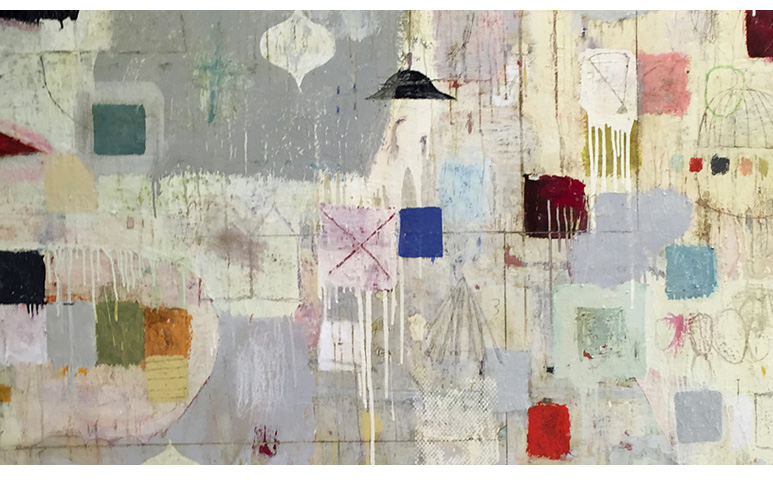 Yesterday while painting I got to thinking about what exactly this practice of art making is all about. It is such an odd activity. I am always trying to summarize, make sense in the larger context of my life what it is exactly that I am doing. I know art making engages me but I also know that it can be really hard too. Why do I keep doing this?
Yesterday while painting I got to thinking about what exactly this practice of art making is all about. It is such an odd activity. I am always trying to summarize, make sense in the larger context of my life what it is exactly that I am doing. I know art making engages me but I also know that it can be really hard too. Why do I keep doing this?
Making art is a practice. The way I interpret this is, in a way, that I am practicing living. Making art is a parallel activity to regular life that, at least for me, teaches and informs me about how to live and participate in it more fully. Like getting a practice serve in ping-pong before you actually start scorekeeping, making art lets you play with what you desire and find meaningful. It gives you extra time to figure it all out. In the process one makes mistakes, goes in wrong directions, and experiences all manner of emotions.
The problem is there are just many, many, things floating around in one’s head that confuse, and sidetrack what is important, or essential to include in your work.
In Greg McKeown’s fabulous book “Essentialism, the Disciplined Pursuit of Less”, the author details the importance of personal discernment in one’s life. This is not entirely about choosing things carefully so that you can fit everything into your life. Interestingly, he stresses that we need to be discerning so that we can do LESS. In other words, an “essentialist” thinks that almost everything is nonessential. There are, however, a few things that are essential and warrant our focus and selection. Most everything out there is a 1 or 2 but there are, in this gigantic pile, a couple of 10s. Those are what we are after.
I feel sometimes I am super busy in my life dealing with all the 1s and 2s I have chosen. None of it matters. None of it is essential. Will I even remember this stuff in 2 days? 1 day? The powerful point in the book for me is that if we can get really, really good at choosing – at discerning what is essential and ONLY choosing these few things, we will not only have far less on our plate, (free time! yes please.) but what we will have, will ONLY be things that are actually meaningful.
We need to learn how to “distinguish the vital few from the trivial many.”
I don’t think I could of written a better summary for what I am actually trying to do in the studio. When I start a painting I tend not to be particularly discerning. I just am gathering anything and everything that resonates with me. But eventually I need to start eliminating the busyness. It seems I spend most of my time painting out 1s and 2s. I sometimes can’t tell what is essential, but I just keep asking myself the question. And then with that in mind, and a little faith, I eventually find my way to a painting that visually and emotionally gives me a partial answer. My art is a summary of what is important, what is essential to me.
What I am discovering, and maybe this rings true for some of you too, that when you stop making your art, when you leave your studio and walk out into a streaming blue day that you sometimes can carry with you a little bit of this learning. That the ability to discern, to choose from all that you come across, what is meaningful and what is not, is truly a benefit. The idea is that over time as our art improves, slowly but surely, our lives do too.
And that, in terms of why we make art, might be reason enough.
Why do you make your art?
In gratitude, Nicholas
5 Things Not to Forget When Making Your Art
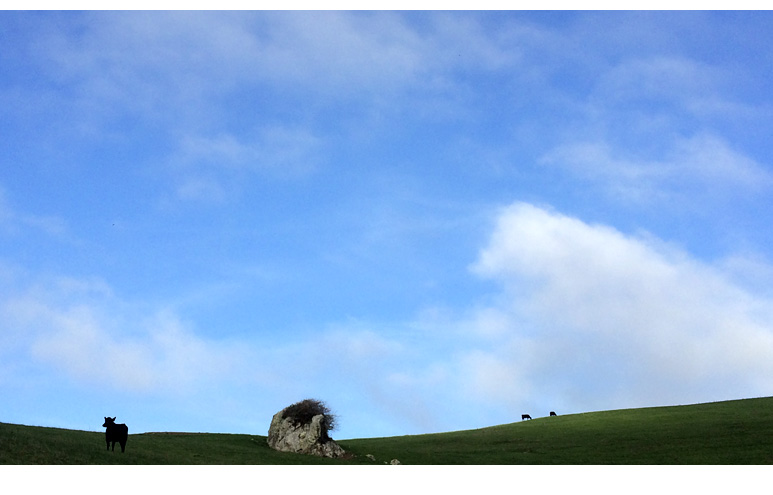 I sit here tonight quite moved by all the artists I have had the pleasure to speak with this past week regarding my Art2Life Mentorship Program. I feel very filled, humbled and honored that I not only get an opportunity to meet so many artists, but that I also have the privilege to share and help actualize some of their goals and dreams in the coming year.
I sit here tonight quite moved by all the artists I have had the pleasure to speak with this past week regarding my Art2Life Mentorship Program. I feel very filled, humbled and honored that I not only get an opportunity to meet so many artists, but that I also have the privilege to share and help actualize some of their goals and dreams in the coming year.
Because I have read so many applications, talked and listened to so many artists over the years, I now realize I possibly have gained an added perspective, an awareness as to some of the common challenges and limiting beliefs that surprisingly, almost all creatives share. None of these are particularly new, but what is helpful, perhaps, is to realize that you simply are not alone in these challenges. It is so easy, especially when toiling away, somewhat isolated within the walls of a studio, we can so easily forget that…
We need to listen
It is a very common occurrence at some point in one’s life to develop the need, the desire, to feel your own creativity in a stronger way. This can take many forms of course, but almost without exception this desire, this fire, begins very quietly. It might be a small voice just beginning to stir within you, but make no mistake, this is only going to grow louder. Having seen what can happen first hand when people actually begin to listen and follow their intuition is remarkable. Not only is it important to listen to this calling but also to know that you are not alone in this quest. This exploration, this query, into this creative side of who you are and who you are becoming is very worthwhile.
Nobody is sure
Nobody is brimming with self-confidence. I have worked with outright beginners as well as highly successful artists…it doesn’t matter where you are on the continuum or how far along you are, the self-doubt always seems to ride beside you. Everyone is a little unsure, unconfident and a tiny bit terrified. No amount of success and accolades seems to quiet this visitor. It looks to me like it will always be present. Maybe it is helpful in keeping one’s ego in check or maybe there is nothing helpful about it – I am not sure. However, I do know that it is not going away anytime soon, so best to just get used to it and get on with the important work that is waiting to be made.
We all have what it takes
It feels so good to be able to say with some authority, as I have now been teaching artists for many years and I have the personal experience to go by, that I no longer believe some people have it and others don’t. Anyone who desires, anyone who has passion to develop their creativity can do so and in the process make authentic, unique artwork.
I know it is hard to believe with all the limiting beliefs swirling around, but it is true. If you don’t believe me then come to an Art2Life workshop. There are many excuses one can conjure up to not do what might be calling you, but don’t let the one about talent and not being good enough be one. It is simply not true.
You expression is needed
When you postpone the making of your art because “everything has already been done by everyone else” then all this simply means is that you are actually not making your Art. The convincing occurs by simply paying attention and beginning to make Art. The possibilities are endless and as varied as you. Once underway, once it begins to form, it finds it’s way to those who appreciate it and need it. Your efforts, your faith in yourself simply gives others permission to do the same. This is reason enough for you to begin.
Change occurs when Intention is set.
It seems like every part of your journey must be fought for, every step a hard one, but actually much of the Journey is effortless. The tailwind that inevitably begins to blow once underway comes from the setting of your own intentions. Saying out loud, declaring what you intend to have happen sets in motion occurrences and synchronicities that help lift you in the direction of your desires. In my life I had often experienced this but just thought it was coincidence. However, after seeing it occurring in the lives of so many creative, I now need no further proof. It is just a fundamental, benevolent principle of the universe that surrounds us.
Once you think about it, there actually is little in our way. The path is clearing and we have time. Inspiration, curiosity and passion come along for free. The odds, when you really think about it, are entirely in our favor.
In gratitude, Nicholas
